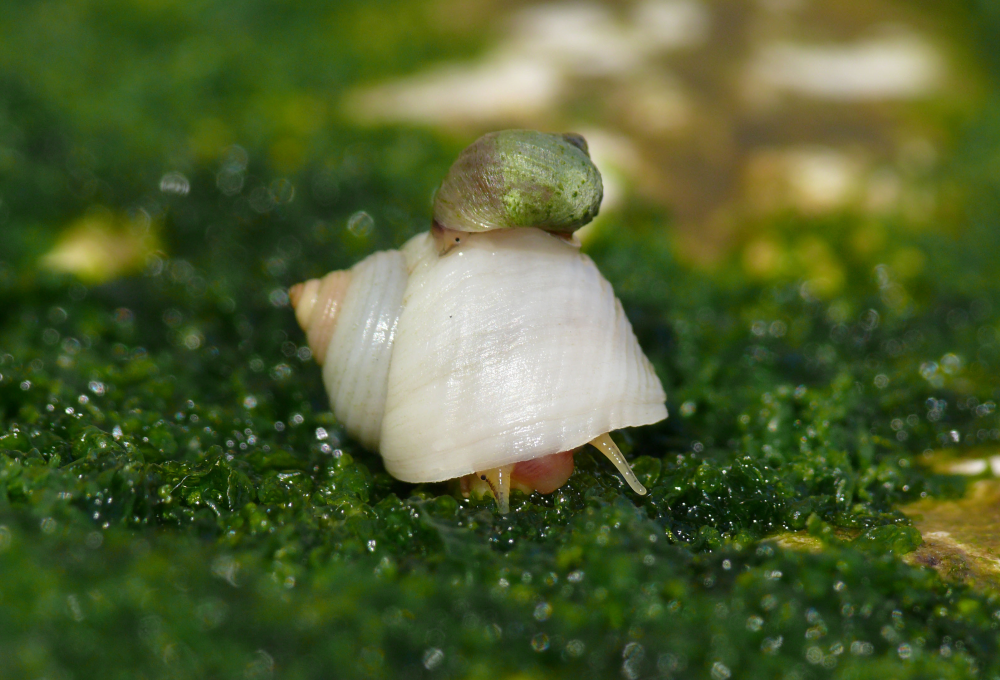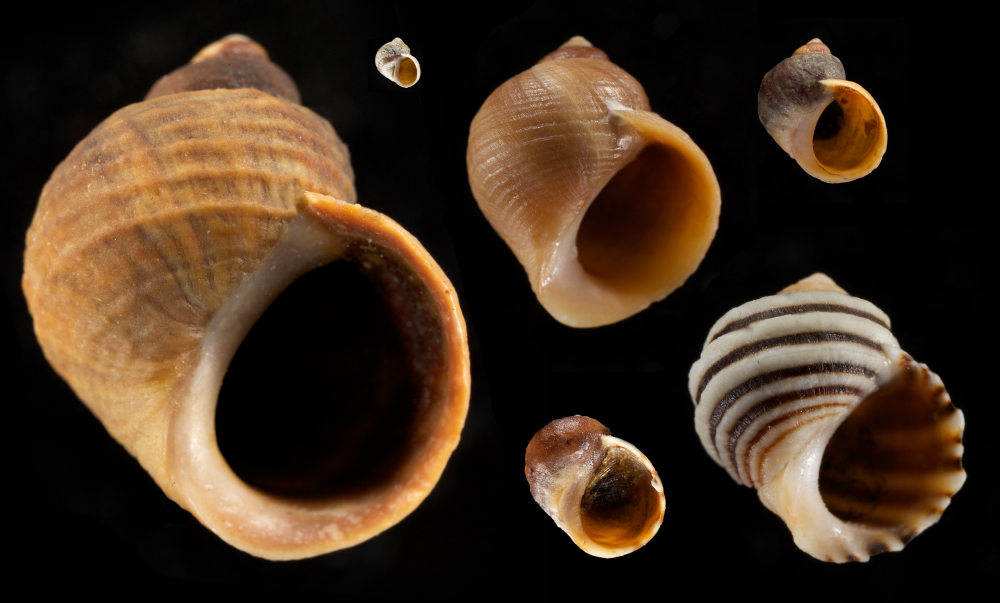Egg laying was the go-to for snails for millions of years – but at some point in the last 100,000, a group of marine snails ditched eggs in favor of live birth. The switch happened in the blink of an eye in evolutionary terms, and scientists have now discovered that it was driven by around 50 genetic changes. The rare opportunity to study the genetic architecture of an evolutionary change has revealed that the secret isn’t making one huge leap, it’s about the accumulation of many gradual changes.
That Littorina saxatilis is a live-bearing snail is about the only obvious trait that separates it from its egg-laying neighbors because it exhibits a wide diversity of shell types and habitats. This may explain why it’s one of the most misidentified creatures on the planet, having been given new species and subspecies names over 100 times according to The Guardian.
To get a better idea of what sets these marine snails apart at a genetic level, a team of researchers led by Institute of Science and Technology Austria (ISTA) postdoc Sean Stankowski looked at the family tree of L. saxatilis and its relatives using whole-genome sequences. Doing so revealed that the ability to give birth to live young was linked to 50 genetic changes scattered across the snail’s genome and identifying them was made easier because of the degree of interbreeding among snails in L. saxatilis‘s range, which can lead to gene exchange across species.
“In this case, it’s what gives us the chance to find the genes involved in live-bearing evolution, because the genetic background has gotten mixed up by all this interbreeding,” Professor Roger Butlin from the University of Sheffield’s School of Biosciences told IFLScience. “That’s why the genes responsible for the live-bearing stand out against the background.”

These are both Littorina saxatilis, but the larger snail is one ecotype that’s adapted for defense against crab attacks, while the small is a second ecotype that’s adapted to live in areas with strong wave exposure.
Image credit: Sophie Webster
Tracing back through the wealth of genetic information revealed that live-bearing young in marine snails emerged gradually over the last 100,000 years as a series of mutations accumulated. However, we don’t yet know which of those incremental changes were pivotal in the striking change in reproductive strategy.
“Exactly which one was needed specifically for the live-bearing trait, I think we can’t say at the moment,” continued Butlin. “All of the 50 occur together in all the live-bearing snails, so it looks like many of them are necessary – together – for live-bearing. But some of them, we think, are probably responsible for other things that go with live-bearing, like the change to breeding all-year-round instead of breeding only in one season.”
As for why they made the move, it’s possible that transitioning from egg-laying to live-bearing could benefit these snails by making their young less susceptible to drying out, getting crushed, or being predated before they had a chance to hatch. But that doesn’t mean it didn’t incur some costs for the parent.
“The extra investment in offspring would have almost certainly placed new demands on the snails’ anatomy, physiology, and immune system,” Stankowski said in a statement. “Many of the genomic regions we identified are likely involved in responding to these types of challenges.”

Littorina snails’ wide range of shell types and habitats may be a result of live-bearing allowing them to adapt to a diverse range of environmental conditions. This has led to the evolution of many “ecotypes” that vary in size, shape, and behavior.
Image credit: Fredrik Pleijel
Understanding how big changes like this come about in evolution is something we rarely get an opportunity to look into as it happens so slowly and across a broad range of species, many of which are extinct. The University of Sheffield team says that this rare example to study the genetic architecture of evolutionary change demonstrates that game-changing innovations occur through incremental steps – it doesn’t take a giant genetic leap to establish striking new functions.
Not only does this teach us about some of the big evolutionary shifts of the past, like how feathers led to flight, but it can also give us an idea of how future changes may occur in response to things like climate change, and which species are unlikely to adapt the thermal regulation required to survive it.
“By discovering and studying the recent evolutionary shift in the way marine snails give birth, we’re now able to understand these major changes and apply our methods to many other evolutionary shifts,” said Butlin in another statement.
“Our results will change the way biologists view major evolutionary transitions, shifting the focus away from big leaps in evolution towards understanding the progressive benefits of small evolutionary steps. They will also help others dissect the genetic and historical basis of other adaptive traits, which is important when many organisms are being forced to adapt rapidly to a changing world.”
The study is published in the journal Science.
Source Link: Snail That Gives Birth To Live Young Reveals Evolutionary Leaps Happen Gradually